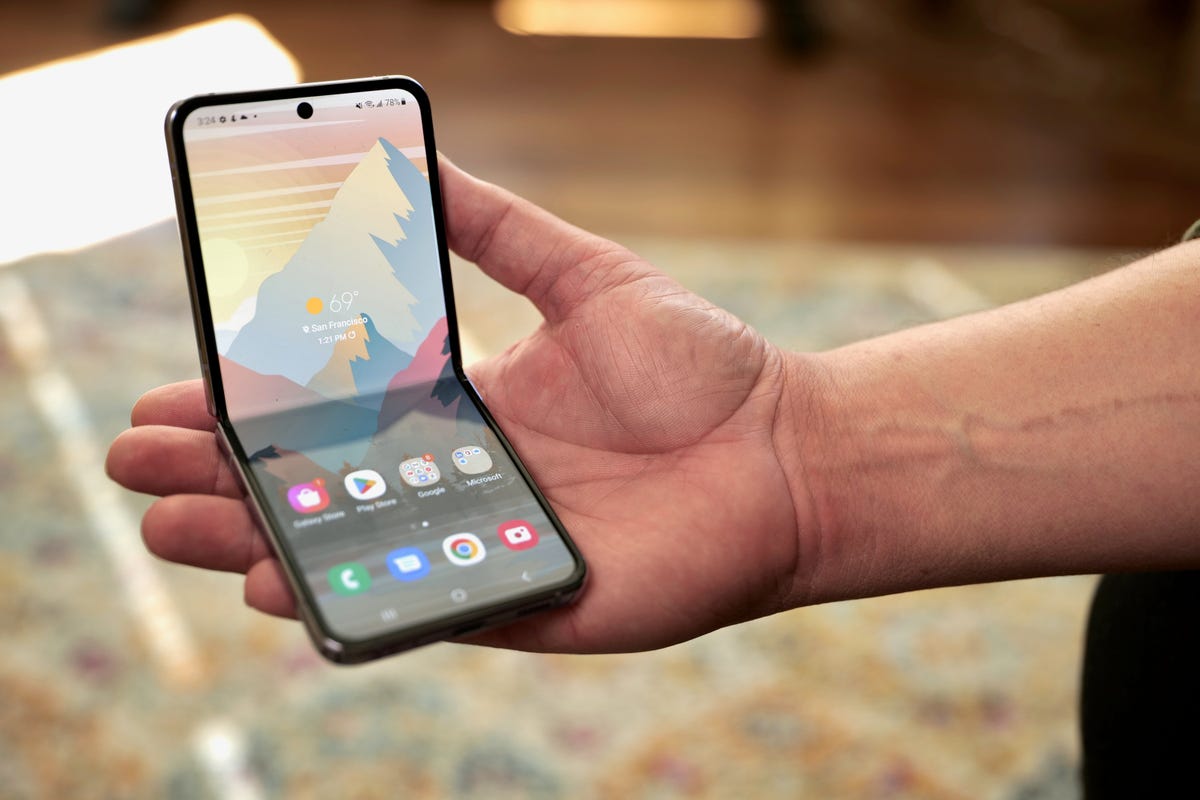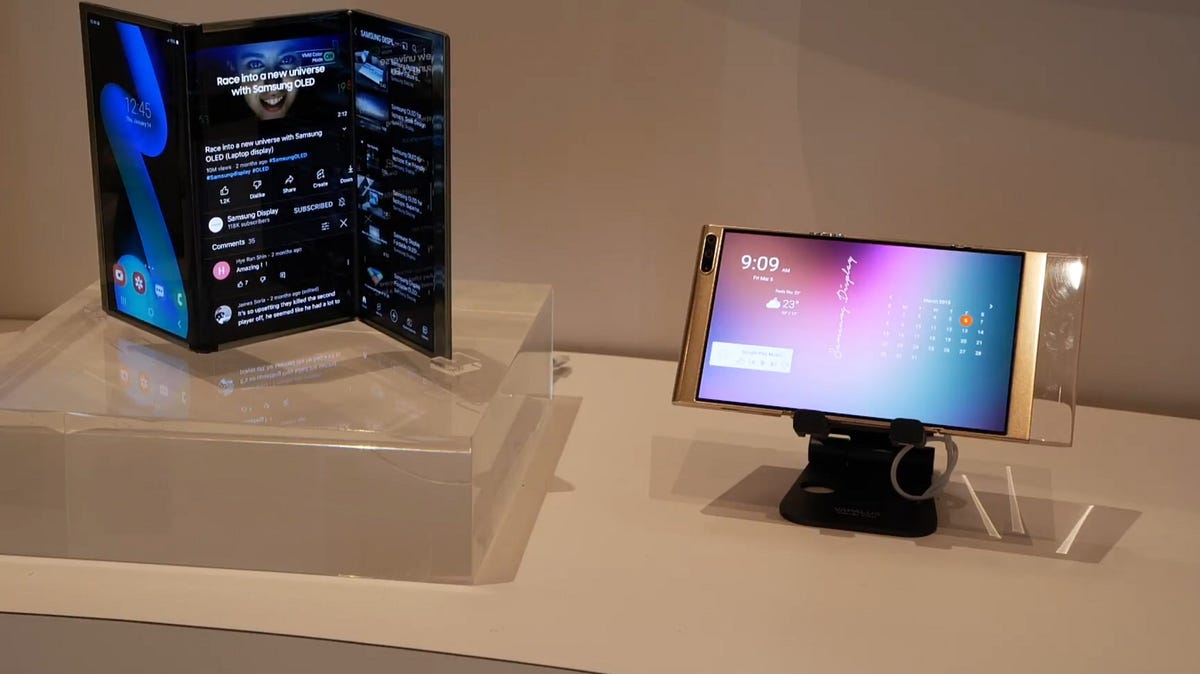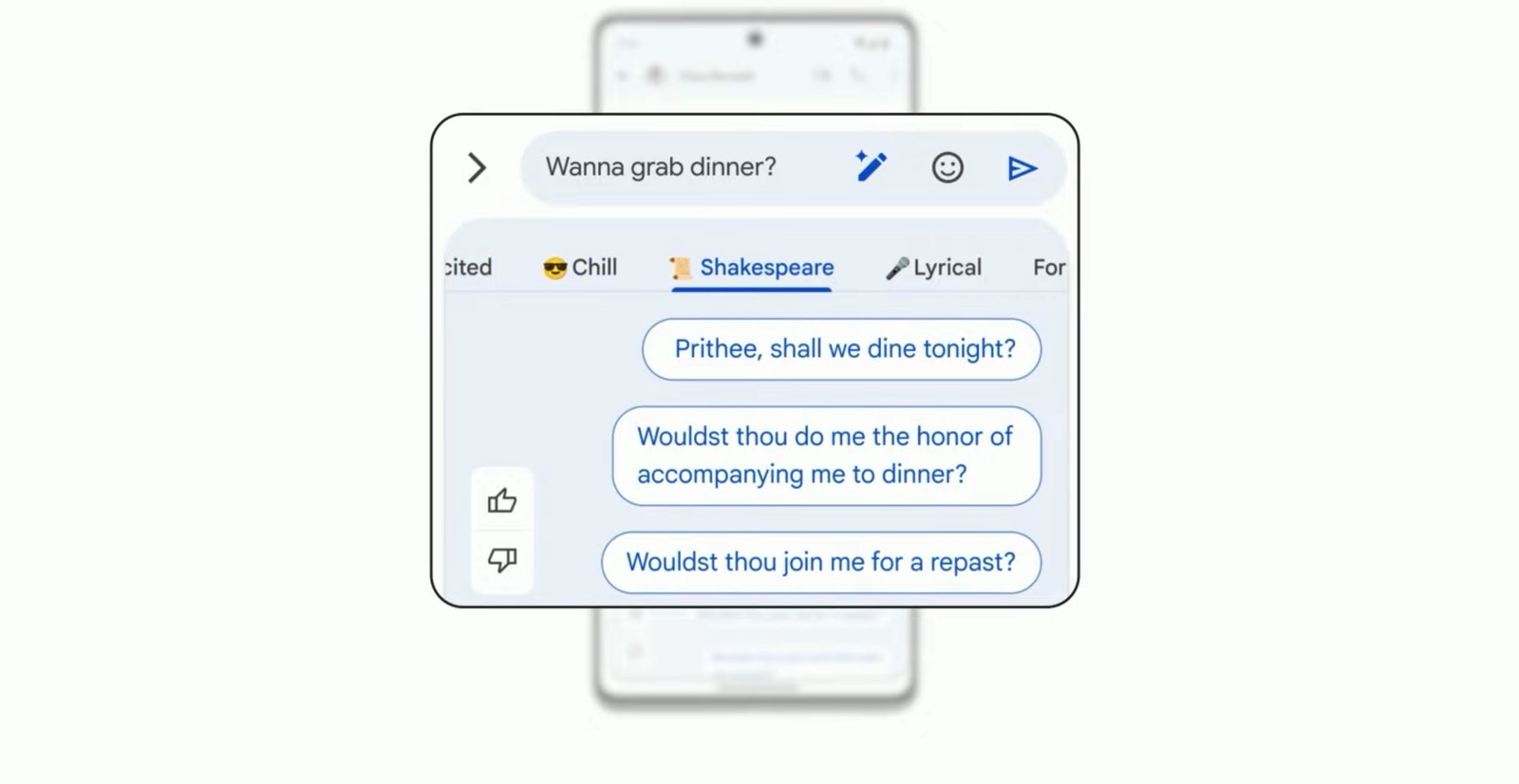Fifteen years since the first iPhone was released, tech companies are in a sort of malaise. And who can blame them? It's getting really hard to jazz up a slab of glass atop a metal rectangle. Though 2023 doesn't look like it'll change the game, there are some features to look forward to that nonetheless raise the bar for the supercomputers in our pockets.
Some of next year's phone advancements are long-awaited, like the iPhone possibly switching to USB-C chargers (in part because Apple is being forced to by European regulators). Other devices will likely improve the artificial intelligence computer programs that make your photos look better, the Wi-Fi and cellular radios that transmit them to the internet, and the screen you see them on. That's at least a little more exciting than the handful of innovations we got this year.
We've all grown accustomed to the tweaks and refinements companies make to phones to improve the speed of their processing chips, the quality of their cameras and the beauty of their screens. Sure, Apple may've introduced the notch-hiding Dynamic Island and a new satellite SOS feature for its $800 iPhone 14, promising peace of mind if you're caught in an emergency without cell service. Samsung may've made its S-Pen stylus available to people willing to pony up $1,200 for its S22 Ultra phone. And the Nothing Phone 1 may've spruced up the affordable 5G niche with an LED-lit design. But otherwise, this year was slim pickings for exciting new phones.
"The only significant thing that was changed this year, I feel, was upgrades to the foldable devices," said Nabila Popal, research director at industry watcher IDC. Most phones just saw incremental improvements, Popal noted, an assessment in stark contrast to Samsung President T.M. Roh saying the company's S22 series has "groundbreaking camera capabilities," and Apple CEO Tim Cook calling the iPhone 14 line "the best iPhones we've ever created."
Ultimately, the promise of a truly exciting new phone may rely on technology that's still years away. One of the best examples came this year when LG announced a stretchable display, raising the possibility that instead of carrying big bulky phones everywhere, we could simply stretch smaller ones when we wanted more screen real estate. LG isn't alone. Motorola showed off a concept device with a rollable display earlier this year, meaning we could get a new kind of flexible screen in a handheld form factor at some point.
But even if we aren't expecting generational leaps in next year's phones, here's what'll improve for these omnipresent gadgets.

The Galaxy Z Flip 4's hinge allows it to stay at various angles. When it's close to perpendicular, it can activate Flex Mode for the software.
Patrick Holland/CNETFoldables are coming for the top tier
This year's Samsung Galaxy Z Fold 4 and Z Flip 4 were incremental upgrades of their predecessors. Neither saw price drops, but they did get S Pen functionality, better software and improved hinges, putting the errors of Samsung's first foldables even farther in the rearview. Next year, expect more of the same: the best foldables yet (with incremental upgrades), but not yet in the price ranges of many buyers.
That may be fine for people acquiring pricier phones, said Popal. While still only a slice of the 1.24 billion phones shipped in 2022, foldables saw sales that doubled from last year, to 16 million devices in 2022, and that figure is expected to keep climbing. Given that the cheapest foldables, like the $999 Samsung Z Flip 4, are priced the same as an iPhone 14 Pro, it's no surprise that more premium phone buyers are starting to swap their flat phones for folding ones.
They're likely more eager to buy pricier phones with some of the best promotional offers we've seen from carriers in years, which are saving consumers up to $1,000 off the list price as part of a multiyear service contract. That's enough to get a new Z Flip 4 for basically free, or cut down the price of a Z Fold 4 to a manageable monthly bill.
Even more consumers are likely to switch if a new device challenges Samsung for the title of cheapest foldable. TCL had shelved its nearly market-ready Project Chicago clamshell foldable because the company couldn't get the price down below $700, which would match the prices of its other phones. Though there isn't a rumor that a cheaper foldable is likely coming in 2023, we do know that the next Motorola Razr may have a lower price than its predecessors. The first foldable to drop below premium pricing could set the bar for future flexible-display devices.
Read more: Foldables Are Still Looking for a Breakout Moment. Samsung Wants to Change That

The iPhone 14 Pro and Samsung Galaxy S22 Ultra.
Andrew Lanxon/CNETWhat's coming for flat phones
There are a few predictions for the next year when it comes to traditional phones, but they don't exactly involve generational shifts.
Apple will be forced to swap out its aging Lightning ports for USB-C by 2024, and the company could do it this year. Rumors have suggested for years that Apple was going to make the switch, but now it has an EU-imposed deadline. Otherwise, in next year's series, assumed to be named the iPhone 15 lineup, the company may pack its priciest Pro Max model with more features and rename it the iPhone Ultra to set it apart from its more affordable large-screen iPhone Plus counterpart, according to Bloomberg.
Android phones will continue their slow march of improvement. Samsung's focus on improving cameras could lead it to use a 200MP camera in its upcoming S23 Ultra phone, according to leaker Ice Universe, up from the 108MP main camera in this year's S22 Ultra. And though there haven't been many rumors about the Pixel 8 series, we can expect Google to find new ways to use the phones' Tensor chipsets to perform previously impossible feats, like the Magic Eraser feature wiping away unwanted things in photos, which debuted in this year's Pixel 7.
Read more: Most Exciting New Phones for 2023: iPhone 15, Galaxy S23 and More
These may seem like small improvements over last year's phones, but it's worth pointing out that most people aren't buying new phones every year. Thanks to two- and three-year contracts from carriers, and the rising cost of phones, consumers take that long to upgrade. When they do go in for a new device, it's been long enough that the advancements are noticeable.
Though only a few years apart, think of the jump from the iPhone X's dual rear cameras to the iPhone 12 Pro's triple shooters and squared sides, and from that to the notch-limiting Dynamic Island and always-on display of the iPhone 14 Pro, Popal said.
"[Phones] have already come so far, and year on year we don't really see that," Popal said. The fast pace of innovations at the beginning era of smartphones make it feel like we've slowed down. "As an industry or as a consumer, we've kind of gotten spoiled."

Two concept devices at Samsung's CES 2022 booth: a tri-fold foldable on the left and a conventional foldable with translucent edge.
SamsungPhones beyond 2023
If we want true change in phones, we'll have to wait for what lies beyond 2023. New technologies could change how we interact with and use our phones.
That could lead us into truly novel territory. Even science fiction hasn't come up with many ideas beyond carrying in our pockets a tech-stuffed rectangle that connects us to the world. We basically tote around a tricorder from Star Trek, a handheld datapad from Star Wars, and the personal-assistant-in-an-earbud from Her -- all wrapped up in one gadget.
Here, closer to our own century, there are some ideas bubbling to the surface. The next premium Qualcomm Snapdragon chips can increase privacy by hiding notifications when the phone sees other people hovering over your screen, while AI advances continue to add filters and effects on all our photos and live video chats. Google and Apple are racing to add more AR features in their navigation apps, as well as making phones the centerpieces for tap-to-pay purchasing and remote unlocking of cars and smart homes. So expect mobile software to put more control of your digital life at your fingertips. And in Apple's case, expect it to harness Lidar to better map the real world, as CNET's Lisa Eadicicco has reported.
Other foldables could come down the line, too. Samsung has shown many different concepts at CES in years past, some with trifold screens and others with transparent panels. These are farther off and probably won't come next year, but at CES 2023 in January, we could see more tantalizing concepts that give an idea of how handheld devices might expand their functionality.
Then again, maybe the future of phones will be in what they connect to -- smartwatches and smart homes, of course, but also AR glasses. Some rumors say we'll finally get our Apple Glasses in 2023, solidifying our phones as anchors to more dynamic technological ways to see the world. Other companies are readying their own AR glasses for the moment Apple normalizes the new technology.
As famed Apple analyst Ming-Chi Kuo predicted, we could have all our iPhones replaced by AR glasses in a decade, so perhaps the days are numbered for phones to be the center of our mobile lives. Until then, we'll keep tracking how they integrate with more and more of our day-to-day experiences, one tech innovation at a time.
Phones Were Boring in 2022. Here's Why They'll Be More Interesting in 2023 - CNET
Read More

No comments:
Post a Comment